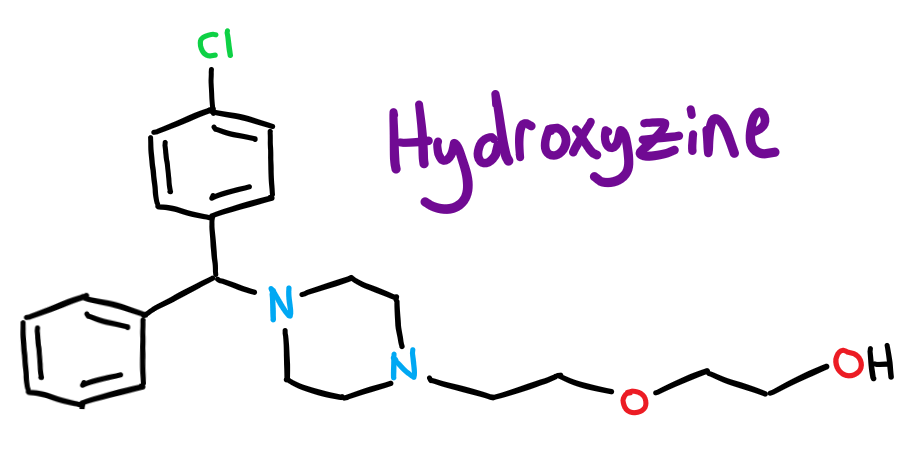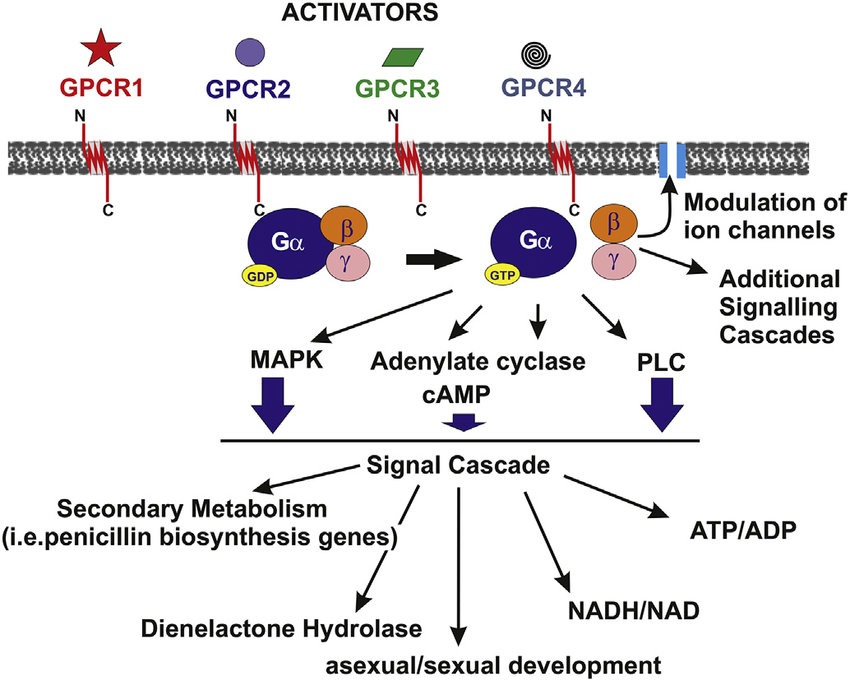You know when something you learnt in one of your classes turns up in real life?
You’re just reading something and it just surprises you out of the blue. That happened to me recently. As per usual I was poking around on the internet looking at the chemistry of yet another drug I’m taking, Cetirizine, for my allergies when suddenly I noticed something I had learnt in my Medicinal Chemistry* class.
*When I refer to my Medicinal Chem class, what I actually mean is General Medicinal Chemistry and Chemical Biology class but hopefully you can see why I’ve shortened it…
I’ll get into what it was I spotted later, but first I think it would be impolite if I didn’t introduce Cetirizine to you (it’s currently saving my metaphorical ass, which in reality is my eyes and nose).
What the heck is Cetirizine?
Cetirizine is an antihistamine which means it blocks the action of a chemical in the body called histamine.
Why do we need to block histamine? Because it is released when the body has an allergic reaction to something and it thoroughly enjoys making your eyes and nose feel irritated and in some cases causes swelling.
If you’re taking antihistamines but you’ve never heard of Cetirizine, check the active ingredients in your pills, there’s a good chance it’s Cetirizine but it’s just got a fancy name. Cetirizine is sold under a bunch of different names like Razene, Zyrtec, Histazine among a million other names.
What am I allergic to?
I’m pretty sure I have Hay fever, a pollen allergy. My Dad suffered from it when he was young so when I found out I had allergies I knew it was Hay Fever.
As the many frequent readers of this blog will know, I am always extremely lucky when it comes to health so of course my allergy caused my eyes to swell up which led to quite a lot of confusion as I tried to figure out why I couldn’t see. Which was actually hilarious by the way.
Next step was to get a doctors appointment so I could get some prescription pills. Now all this happened during the peak Corona season in Germany so I had to have a phone consultation with a doctor because I couldn’t go in.
Long story short, after confirming several hundred times that I do not have corona, the lovely German doctor laughed at me while he explained that the medicine I needed, Cetirizine, was sold without needing a prescription.
Chemistry time ❤
Enough stories, it’s Chemistry time ❤! Cetirizine is quite a large structure, I’ve drawn it below.

For non chemists: Every ‘corner’ on this diagram represents a carbon atom, and every line a bond!
This is where Chemistry gets cool. If you change just a few parts of this molecule you get hydroxyzine, another antihistamine that treats ichiness from allergies.

A lot of drugs are actually made by changing small areas of a ‘parent’ molecule to form lots of other difference drugs. If you go back and look at my penicillin post you’ll see that I discussed Penicillin G and Amoxicillin, which are both based on the parent penicillin.


Notice how since taking Organic Chemistry class, my hexagon drawing skill has gone through the roof.
A lot of the time in history, medications have been found by accident, and then once the drug has been found, and then more similar medicines are made by making minute changes to the structure (which is quite cool).
It’s not true that medicines were found when people went searching for them based on their Chemistry, it kind of just happened when someone thought “what if I ate the bark off that willow tree” and effectively discovered aspirin.
How does Cetirizine work?
As with a lot of other drugs, Cetirizine binds to receptors which then causes a response within cells which blocks the action of histamine.
This is where I saw the thing from my Medicinal Chemistry class, the receptor that Cetirizine binds to is a type of receptor called rhodopsin-like g-protein-coupled receptors. Ignore all the big words that’s just biologists having fun with words.
The funny thing is that I clearly remember my Professor saying that quite a lot of drugs interacted with these types of receptors but my brain just thought he meant more exotic drugs like antipsychotics or antidepressants, not something that helps my nose.
What on earth is that
It’s basically a funky receptor that enjoys it’s life in the cell membrane of a cell. It looks a bit like this:

The basics is that a molecule, like a drug for example, can bind to the part of the receptor outside the cell membrane. This receptor itself is just a protein, and proteins are delicate so when the drug binds to it, the receptor flips out and changes it’s shape.
This change in shape also affects the part of the receptor that’s inside the cell and it allows a G-protein to bind to it. When the G-protein binds, it gets destabilised and breaks into pieces.
These pieces then go and do fancy biology things like harass enzymes (or become enzyme’s best friend) which in the case of Cetirizin is to stop Histamine in my body making my life hell.
If I ever do that much bio again call an ambulance
I actually had to do some research for that because my memory was a bit rusty and the diagrams just reminded me why I’m not cut out to do cell biology.

But yeah, I thought that was kinda cool
Hopefully you did too :). I seem to be enjoying writing these posts about medications I take, maybe I should be a medicinal chemist. Let’s see.
I accidentally read taking as making ??
Oops ? no I am not making Cetirizine
Please make next blog about how to synthesize it in lab.